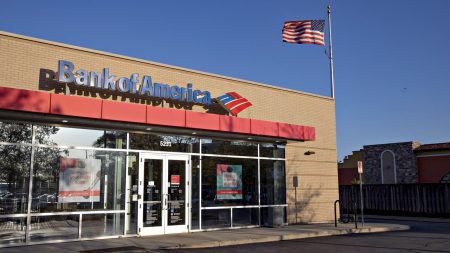Imagine you get into a car accident: You dust yourself off, check the damage, maybe snap a picture or two. Then you call your insurance company.
You start a claim; you take your car to the shop. Once your insurance adjuster and the body shop have taken care of everything, you’re only responsible for your deductible. You pay that fee, take the keys back from the body shop, and drive off in your car.
That’s how car insurance is supposed to work. But in recent years, the process has gotten a lot more complicated. More and more car owners are getting calls from repair shops saying that their insurance company won’t cover the full cost of repairs. Even drivers with full coverage may find that, in the wake of an accident, their insurance policy doesn’t cover everything they thought it did.
The problem comes down to a disagreement between repair shops and insurance companies over what is — and what isn’t — necessary for auto repairs. One key point of contention is the safety inspections required by auto manufacturers in the post-collision repair process, which more and more insurers are refusing to cover.
To get an inside view of what’s happening in repair shops, we spoke to a woman who runs a family-owned collision repair shop in Kansas. She prefers to remain anonymous, so we will call her Donna. She’s been in the business for a decade, and she says the problem is getting worse: “People really need to know what’s happening here.”
Repair instructions are clear — but insurance companies disagree
Original equipment manufacturers (OEMs) provide extensive repair manuals for their vehicles, with detailed instructions on what to repair, replace, calibrate and inspect during a post-collision repair. Body shops pay for access to these instructions, either directly from manufacturers or through third-party platforms like ALLDATA.
In order to fix cars correctly — that is, in order to maintain their safe functionality — repair shops need to follow these instructions. But increasingly, some shops are getting pushback from insurers on the finer details of OEM procedures.
Donna gives an example: there’s a 2021 Toyota Tacoma in her shop right now with “pretty significant damage” to the front fender and bumper. Despite the extent of the damage, the airbags didn’t deploy. Per the OEM repair manual, Toyota requires repairers to perform certain safety inspections after any accident, with different instructions for crashes with and without airbag deployment.
“So, to me,” she says, “it’s very obvious: we’re going to pick the one without the airbag deployment, and we’re going to follow those instructions.”
But following Toyota’s instructions requires Donna’s team to remove multiple trim panels inside the vehicle in order to perform manual and visual inspections of the airbags, along with other safety-related items. And the insurance company handling the claim won’t pay the shop for the labor required to remove those panels.
“They told us the safety inspection was ‘unwarranted’ because the airbag did not deploy,” she explains. “Those were the words that they used in their email.” The insurance company considers this part of the OEM’s repair instructions unnecessary, so if Donna and her team decide to complete the required inspection, they won’t get paid for it. Instead, they’ll have to bill the customer for it, or do what they increasingly have to do: complete the work for free and write it off as a business expense.
Donna’s experience is part of a growing issue
In a four-part survey of hundreds of repair shops across the country, Collision Advice and the CRASH Network found that repair shops frequently don’t receive payment from insurance companies for necessary repair operations, including those required by OEMs for safety purposes. For example, just 36 percent of repairers report that they’re paid all or most of the time for safety inspections following a repair — despite every automaker requiring these inspections in their repair instructions.
What happens when insurance companies won’t pay for repairs?
When insurance companies refuse to pay for repair procedures required or recommended by automakers, Donna says, the cost often falls on the repairer. For most of her customers, “paying out of pocket is the absolutely last resort.”
That leaves Donna and her family with three options:
- Only complete the repair steps covered by insurance
- Ask her customers to pay for the full cost of repairs that insurance won’t cover
- Do repairs for free
“A few years ago, we tried to take a firm stance,” Donna recalls. Rather than writing off procedures, she and her family would call the customer and explain the situation: This is an important part of the repair process, but they’re denying payment. You’re going to get a bill for $150.
Instead of accepting the added charge, customers got mad. “And they’re mad at me,” Donna says — not the insurance company. “I’m the bad guy now because I shouldn’t be charging out of pocket.” The friction the situation generated with Donna’s customer base became so significant that she and her family had to change their approach.
“It really hurt our business,” she says. “We started hearing comments like, ‘Don’t go to that shop — they’ll send you a bill.’” Now, she says, she writes off a significant portion of her business to avoid angering customers whose insurance companies won’t pay up.
Safety issues
Donna isn’t just worried about getting paid. She’s also concerned about what happens if she’s not able to complete repairs according to the manufacturer’s instructions.
If she doesn’t inspect the airbags on her Toyota customer’s truck according to the manufacturer’s instructions, Donna worries, it could cause safety issues down the line. If the customer chooses not to pay for the inspection and Donna doesn’t offer it for free, the airbags could fail in a future crash and cause serious injuries — even death. “That’s hard for me to sleep at night,” she says, “knowing that we sidestepped that.”
Even more concerning is the silent cascade of safety issues that could arise if shops like hers start cutting corners to stay afloat.
“There’s really no way to track how these cars were repaired,” she explains. “Once they’re back on the road, the safety risks might not become apparent until it’s too late.” She remembers a car that came into her shop with a missing airbag following a crash. A previous repairer had put a piece of cotton behind the dashboard, she explains, to hide the indicator light that would have warned the owner about the problem. “There was an empty hole where the airbag should have been, and this guy’s 20-year-old daughter in college was driving this around.”
Liability issues
Donna’s safety concerns aren’t just altruistic. She’s also worried about the legal consequences for her business if incomplete repairs cause safety issues later on. “If we don’t inspect those airbags and something goes wrong,” she explains, “the liability ultimately falls on us.”
Repairers like Donna are caught in a triangle between manufacturers whose repair procedures are becoming more complex, insurance companies reluctant to pay the added cost and customers who bring their car to her expecting insurance to cover the full cost of repairs.
Everyone in this equation agrees that the car should be repaired. But nobody, from the manufacturer who built the car to the consumer driving it away, wants to pay.
“It hasn’t always been this way”
Disagreements in the claims process aren’t new. Insurance adjusters and collision shops have always run into disputes over the correct cost of repairs. But Donna and fellow repair shop owners say that things have gotten worse in the past five years, and it’s causing problems for their business.
Andrew Batenhorst, who owns a collision repair shop in California, says the trend started around 2021: “Post-pandemic, it is definitely increasing.” Jerry McNee, owner of Ultimate Collision Repair in Edison, New Jersey and former president of the New Jersey Alliance of Automotive Service Providers (AASP/NJ), agrees. But he dates the trend even more recently: “I’ve never seen some of the tactics or things that I’ve seen in the last year to two years.”
Both Donna and Andrew Batenhorst trace the upward trend in insurance denials back five years, to the start of the COVID-19 pandemic. COVID squeezed insurers’ budgets in a variety of ways: a sharp decline in driving followed by a dramatic uptick in dangerous driving habits, supply chain issues driving up the cost of key auto repair components; money lost to inflation and to customer paybacks during the 2020 lockdown. Customers have felt the delayed pressure of the pandemic in the form of elevated premiums since 2021; repair shops have felt it, too.
But it’s not just the economy that’s changed; cars have undergone significant mechanical transformations in the past five years. With today’s vehicles, Donna says, “safety is a much bigger issue.” They’ve got a lot of electronic components, a lot of wiring, a lot of sensors. “They’re computers on wheels,” she says.
All those computers make modern cars safer, but they also make the repair process a lot more complicated — and, Donna notes, “a lot more expensive.” A car’s advanced driver assistance systems (ADAS) rely on countless sensors and cameras to operate correctly. If a camera or a sensor is knocked out of place during a crash or the subsequent repairs, that safety system may malfunction in the future. As a result, OEM repair instructions now include a lot of steps for the inspection and re-calibration of these safety components.
The insurer perspective
As frustrating as the conflict between repairers and insurers can be, Donna doesn’t just want to bash insurance companies.
“We need insurance,” she says. And not all insurance companies approach the claim process in the same way. “Some carriers do act responsibly and provide fair, reasonable settlements.”
After all, insurance companies and repair shops are working toward the same end goal in the claim process: fix the car and get the customer back on the road.
“Insurance and repair shops really have the same goals,” says Bob Passmore, Department Vice President for Personal Lines at the American Property Casualty Insurance Association (APCIA), the industry’s largest trade association. “They want to provide a quality repair, a safe repair, and a cost-effective repair — and a good experience.” As important as customer relationships are for repairers, Passmore says, they’re even more important to insurance companies.
But he dismisses the concern Donna and other repairers have about insurers’ refusal to cover certain procedures listed in OEM repair instructions. Shifting responsibility for full payment onto insurance companies, he argues, would drive up the cost of car insurance simply to satisfy unclear OEM requirements and line repairers’ pockets.
“Half of this stuff is either vague or nonexistent,” Passmore says. In his view, it’s “really only used by some shops to create leverage for a higher repair bill.”
The insurance company always wins
Passmore’s comments might encourage consumers to put less trust in their repair shop and more in their insurance company. But Donna says that she sees trust running in the opposite direction: “What I see is our consumers, they have a lot of trust in their insurance company.” That’s disheartening to her.
“I know these people,” she says. “I grew up here. I have to look at Mrs. Smith and say, Mrs. Smith, you’ve known me my whole life, and you trust them more than you trust me?”
Despite working in a small, rural market with customers she knows personally, Donna finds that her customers are quicker to question her business than their insurance company when it comes to disputed repairs. It’s not uncommon for a customer to arrive and say, “I’m sorry, they told me I have to go to this other body shop.”
“Of course they’re going to tell you to go to the cheaper option,” says Donna. “Why am I the bad guy for not being the cheaper option?”
One challenge for repair shops trying to negotiate claims is the sheer size of the insurance companies they’re dealing with.
Take State Farm, for example. State Farm is the largest provider of auto insurance in the United States. In 2024, State Farm earned $442,744,583 in personal auto insurance premiums in the state of Kansas alone, according to SERFF filings — one drop in the 48-state bucket of $69 billion in earned premium that State Farm reported in 2024. But in the CRASH Network survey of repair shops, just 29.2 percent of repairers working with State Farm reported being paid all or most of the time for OEM-required vehicle safety inspections — a lower percentage than any other major insurer.
It’s frustrating, Donna says, to see repair procedures denied by such large and wealthy institutions. Most repair shops, including her own, are small, independent businesses. “There’s some multi-shop owners out there that may have 10 or 12 stores, and of course there’s the Gerbers and the Calibers,” she says, “but they’re all still so much smaller than these carriers.”
Up against major carriers, neither Donna nor her customers have a lot of options. If a carrier refuses to pay for certain repairs, claimants may be stuck either paying the extra bill out of pocket or accepting the risk of skipping OEM procedures. Aside from those options, the only other recourse some customers have is to sue the insurance company — an expensive and time-consuming option that few people want to risk.
“And the insurance companies are fully aware of this,” Donna says. “They just know that they are just going to say, ‘no, we’re not paying for that,’ and nobody’s going to do anything about it.”
Worried about repairs? What you can do:
If you find yourself caught in a dispute between your repair shop and insurance company during collision repairs, these steps may help:
- Read your policy: Start by reviewing the details of your insurance policy to understand what’s covered, as well as your rights under the contract between you and your insurance company.
- Look for an appraisal clause: Many auto policies include a clause that allows policyholders to request an outside appraisal if the parties disagree on the cost to repair your vehicle. Some insurance companies are removing this clause from their policies or limiting appraisal to total loss situations, but some state laws require insurers to honor this right.
- Ask your repairer about the uncovered procedures: In some cases, the repairs that insurance won’t cover may be primarily cosmetic, while other procedures are essential for safety. Understanding what your vehicle needs and the potential consequences of skipping that work can help you make an informed decision.
- Shop around for new insurance: While you can’t switch to a new insurer and restart the claim process, a bad experience with an insurance company may be a good reason to look for insurers with a better record for handling claims. Resources like the J.D. Power Auto Claims Satisfaction Study or the CRASH Network’s Insurer Report Card may help you identify a better fit.
The bottom line
One thing’s clear to Donna: the situation that she and other repairers are in isn’t sustainable. In the short term, writing off procedures that are necessary for safety keeps customers from walking away.
If it’s a one-time situation, sometimes you’re forced to make business decisions, do we accept the liability or risk losing the customers? But increasingly, this is becoming a widespread issue across more and more insurance companies.
— Donna
Collision repair shop owner
They’ve considered refusing business with insurance companies they’ve had negative experiences with and only working with a few select carriers. “But that’s not always sustainable either,” she explains. “Those companies typically aren’t the big ones, so restricting ourselves would mean significantly less work coming through the doors.” If insurers continue to deny payment for OEM-required procedures, Donna says, some shops will have to close.
Read the full article here









